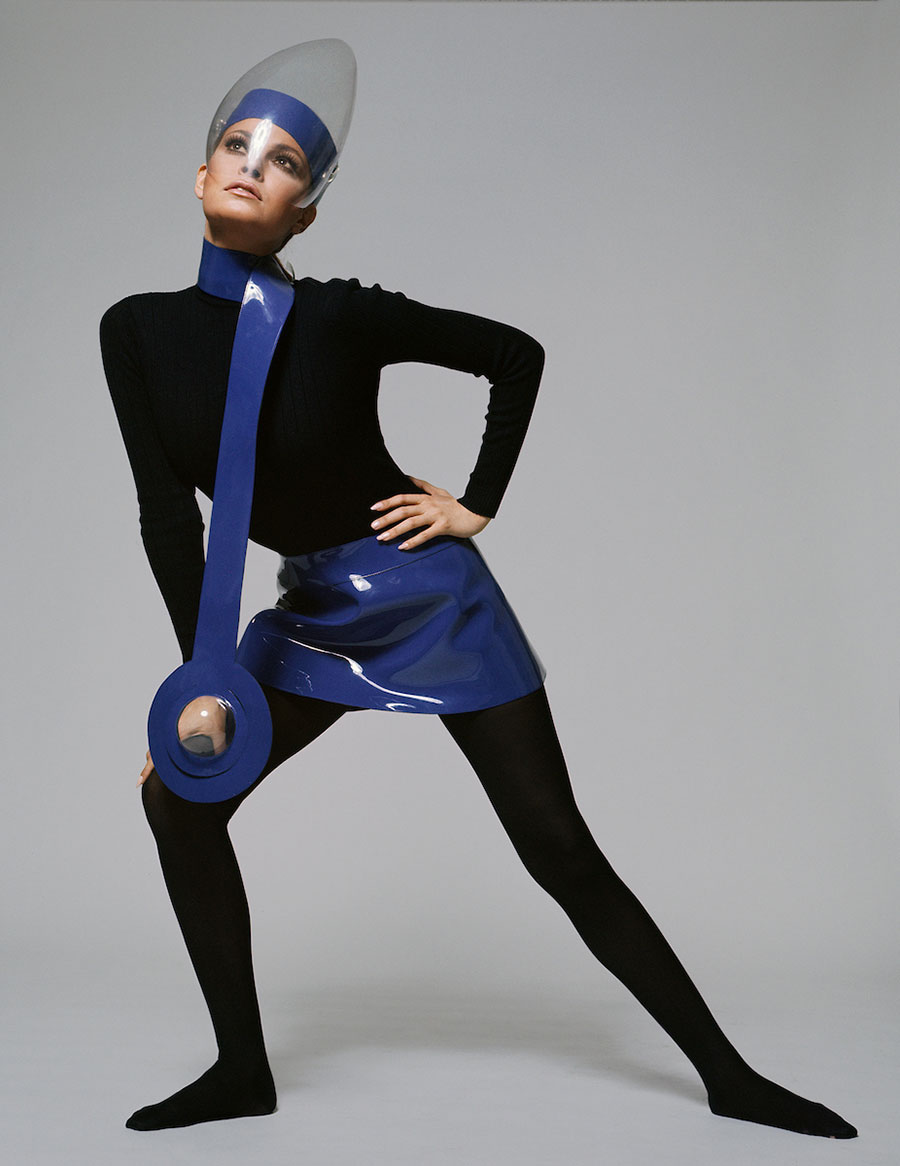One Giant Leap for Fashion
How the space race revolutionized couture
How the space race revolutionized couture

50 years ago on 20 July 1969, the Apollo 11 astronauts Neil Armstrong and Buzz Aldrin landed on the moon, a landscape that Aldrin described as ‘magnificent desolation’. A year later, the actress Raquel Welch was photographed by Terry O’Neill, resplendent in Pierre Cardin vinyl – a vision of mid-century futurism in a Plexiglas visor resembling a cross between a flight attendant’s pillbox hat and an astronaut’s helmet.
20 July will also mark the opening of ‘Pierre Cardin: Future Fashion’ at the Brooklyn Museum, which charts the designer’s long career and includes pieces from his landmark 1964 ‘Cosmocorps’ collection. In 1961, after a Soviet rocket put Yuri Gagarin in outer space and returned him safely to earth, the US president, John F. Kennedy, made a speech to Congress outlining his mission to land man on the moon. The space race that followed made spacesuits a fashion obsession, playing out Cold War concerns and intergalactic dreams on the bodies of consumers.
Throughout the decade, Paris was dominated by couturiers who were consumed with interstellar zeal. The year of Cardin’s ‘Cosmocorps’ show also saw André Courrèges’ ‘Space Age’ collection, which debuted the ‘moon girl’ look. Two years later Paco Rabanne’s ‘12 Unwearable Dresses in Contemporary Materials’ featured aluminium, chain-link metal and Rhodoid plastic, materials that had never been seen in fashion before and which inspired the costume design for Barbarella (1968). Their style forged an entirely new, modern look in the rarefied world of French couture.
Links between fashion and space travel continue with Y-3 designing flight suits for Virgin Galactic and numerous NASA collaborations, ranging from Nike to Coach and Heron Preston. It’s clear that one small step for man created a giant heap of inspiration for the fashion world.
‘Pierre Cardin: Future Fashion’ runs at the Brooklyn Museum from 20 July 2019 – 5 January 2020.























